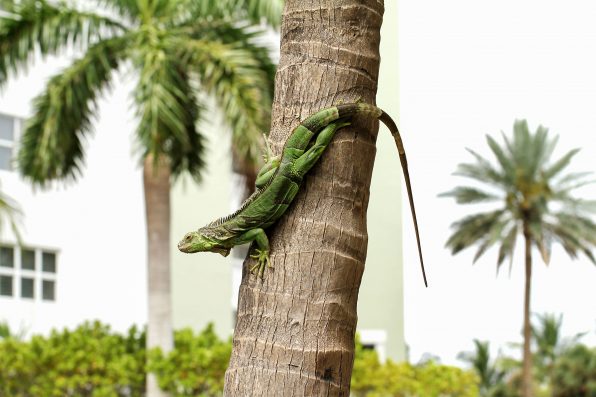Iguanas Are Freezing And Falling From Trees In Southern Florida Due To The Recent Cold Snap, And While This Survival Mechanism Happens Annually, It’s Still Quite Startling

In southern Florida, hordes of iguanas are tumbling from trees due to the recent cold snap the region has been experiencing. Picture this: you’re taking a stroll on a clear, crisp day, and out of nowhere, an iguana falls at your feet.
There’s no need to be alarmed, though! These iguanas aren’t dead—they’re just frozen in a way that’s essential for their survival. Although it occurs every year, the phenomenon does not fail to startle both residents and tourists alike.
But why does this happen? Iguanas are cold-blooded creatures. They are also an invasive species in Florida and native to the warmer, tropical climates of Central and South America, making them more susceptible to the cold weather that Florida occasionally receives.
When temperatures dip into the 40s, iguanas enter a “cold-stunned” state where they become temporarily immobile until the temperature warms back up above 50 degrees.
Floridians might be hearing more about falling iguanas lately because their populations have been steadily increasing over the past decade. People are beginning to notice the occurrence more and more.
Residents are advised to leave the lizards alone and refrain from bringing them into their homes, as they may feel threatened and launch an attack once they warm up. If you come across a paralyzed iguana on the ground, the best course of action is to let them be and calmly move around them.
The bigger concern for people is that iguanas usually sleep in trees, so when they seemingly drop from the sky, they can land on streets, cars, or even humans and pets, causing bodily harm and damaging personal property.
Since adult male iguanas can grow up to five feet in length and weigh up to 20 pounds, passersby should be careful, as it can be dangerous if one happens to fall from overhead.
Severe cold is hazardous to the lives of the iguanas, too. Some iguanas, especially the ones smaller in size, may die if the temperatures stay cold for longer than eight hours. Exactly when iguanas begin to enter a dormant state depends heavily on their size.

Jillian Cain – stock.adobe.com – illustrative purposes only, not the actual iguana
The larger the lizard, the more tolerant it is to the cold. However, even in periods of colder weather, some iguanas have figured out ways to stay warm and survive.
They are known for digging burrows as shelter to protect themselves from frigid temperatures.
Due to the climate crisis, experts believe that the frequency of falling iguanas will decrease in the coming future.
Global warming has caused temperatures to rise, so there will be fewer spells of cold in the decades ahead.
The warmer conditions will also help iguanas grow their ranks, so they definitely won’t be going anywhere anytime soon.
The giant lizards are here to stay, and Floridians must learn to live with them and their interesting habits.
Sign up for Chip Chick’s newsletter and get stories like this delivered to your inbox.
More About:Animals





